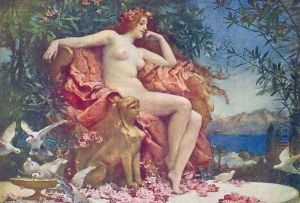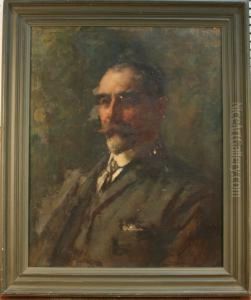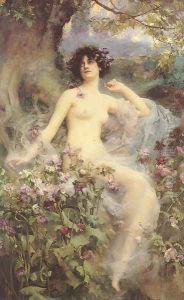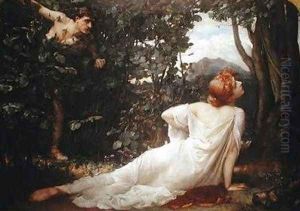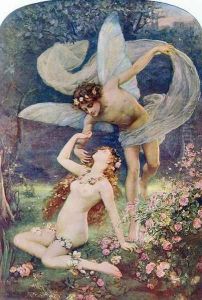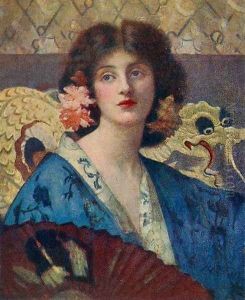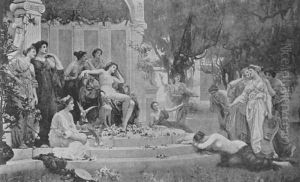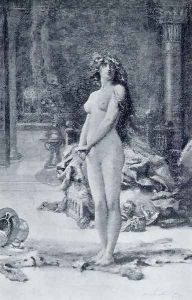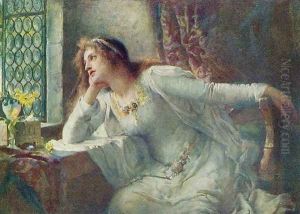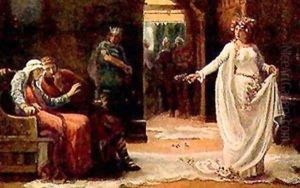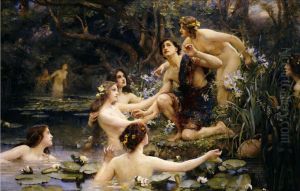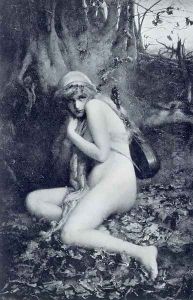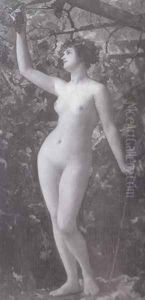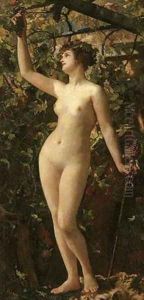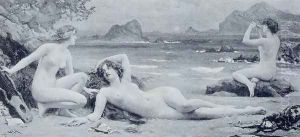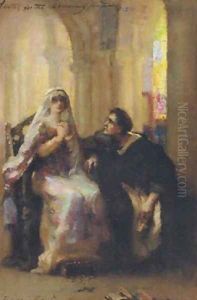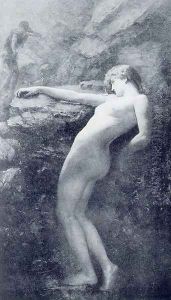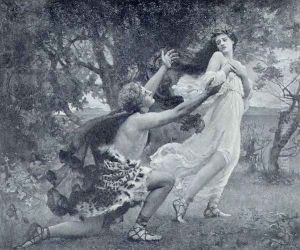Henrietta Rae Paintings
Henrietta Rae was a prominent English painter during the late 19th and early 20th centuries, known especially for her classical and allegorical works. Born on December 30, 1859, in Hammersmith, London, Rae displayed an early talent for art. Encouraged by her parents, she began her formal art education at the Queen Square School of Art in London, and later, she attended the National Art Training School, now known as the Royal College of Art.
Rae was particularly inspired by the Pre-Raphaelite Brotherhood and the classical subjects of the Renaissance. She pursued her artistic education with great passion, eventually gaining a place at the prestigious Royal Academy Schools in 1877, where she was one of only two female students at the time.
Throughout her career, Rae faced the challenges of being a woman in a male-dominated field. Despite these obstacles, she achieved considerable success and was known for her large-scale and exquisitely detailed paintings. Rae often depicted mythological and historical scenes, infusing them with a sense of romanticism and beauty. Her work was characterized by rich color, intricate details, and a focus on feminine beauty and strength.
Henrietta Rae married fellow artist Ernest Normand, and they often collaborated on artistic projects. Their partnership was not only personal but also professional, as they shared a studio and influenced each other's work.
Rae exhibited her paintings regularly at the Royal Academy and other galleries, receiving positive reviews and building a reputation as a skilled painter. Her notable works include 'Psyche before the Throne of Venus', 'Ophelia', and 'The Sirens'. Despite her success, she never achieved the same level of fame as some of her male contemporaries.
Henrietta Rae continued to paint and exhibit her works until her health began to decline. She passed away on January 26, 1928. Today, her paintings can be found in galleries across the United Kingdom, and she is remembered for her contribution to classical and allegorical art, as well as her role in paving the way for future generations of female artists.
